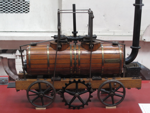When the Middleton Railway Trust started in 1960 it had very little in the way of resources, and so it had to develop in order to survive. Those early development projects could only be small-scale ones - a bit of track relaid here, or a bit of maintenance work on a locomotive there - but as the railway has grown so too has the scale of the projects that it could undertake. Indeed, much of the work that constituted "a project" then would now be regarded simply as routine maintenance.
These pages therefore focus just on major development projects, with a particular emphasis on the ones that are currently taking place or have been completed recently, although eventually pages will also be created here to describe some other projects that had been completed previously.
Current Projects
Last Coals to Leeds
2018 is the 50th anniversary of the closure of the Middleton Broom Colliery, which until then had been the main focus of the existence of the Middleton Railway, since the railway had originally been built to carry coal from there into the centre of Leeds. The railway will be running a special event to mark this, and it will also be undertaking an educational project focused on primary schools in South Leeds, to raise awareness of the importance of the mining heritage of this part of the city.
Separate pages give more details of:
- the educational project; and
- the special commemorative event.
Raising Steam in No. 6
‘No. 6’ (Hawthorn Leslie Works number 3860) was built in 1935, and spent its entire working life at APCM's Cement Works in Swanscombe, Kent, along with six others. In 1971 they were replaced by diesel locomotives, and APCM donated No. 6 to the Middleton Railway. It quickly entered service, and played a major part in operating the railway's passenger trains, until it had had to be taken out of service in 1975 for an overhaul. The picture below shows it emerging from the tunnel under what was then the newly-constructed extension of the M1 motorway.
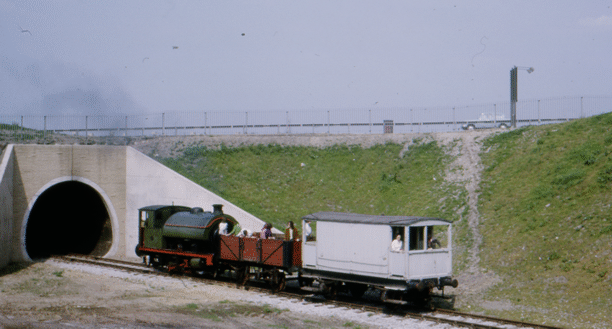
By this time there was a queue of locomotives awaiting overhaul, and No. 6's turn to enter the workshops did not come until 2001. The frames and running gear were overhauled, but then a further delay came in 2005, when the complete remodelling of the Moor Road site began, along with the construction of the Engine House building, and so work on No. 6 more or less ceased.
Meanwhile, it had become clear from an inspection of its boiler that some major repairs would be needed, and so during 2014 Gordon Newton (formerly of the boilermakers Israel Newton and Sons) visited the railway to offer advice on what work was needed, and on how much of this our members could undertake. The work that he identified has been done, and so to complete the overhaul we now have to send the boiler away to a boilermakers for the rest of the repair work. A conservative estimate is that this could cost up up to £60,000, and so we have launched an appeal for the funds needed to return No. 6 to steam by 2020, when it will be 85 years old.
Separate pages give more details of this project, and of the appeal.
Project Phoenix
During 2016 the railbus OLIVe, which is owned by our colleagues in the EM2 Locomotive Society, was the subject of an arson attack which burnt out its interior. While it was insured, the costs of actually repairing it will be significantly more than the insurance payment, and the EM2 Locomotive Society has launched an appeal for the additional funds needed to restore it to working order.
A separate page gives more details of this project and appeal.
Completed Projects
The Running Shed and "Buy a Brick" Appeal
When the railway's business plan was drawn up for the five years from 2011 to 2015, one of the proposals that had been included in it was for a project to construct a running shed, in order to improve the conditions in which operating steam locomotives were kept and prepared for service. From the outset it was clear that this project would need a significant amount of money, and so some careful financial planning would have to be the first step.
The outcome of this planning was that early in 2013 it was agreed both to set up the "Buy a Brick" scheme to raise money for this project, and to start work on planning the details of the engineering aspects of this project. The picture below illustrates the design for the bricks, and was used in the publicity material for the scheme.

Separate pages give more details of this project. It was effectively completed in December 2017, when we started to use the shed, but the formal opening ceremony for it was not until 21st July 2018.
"Brookes No. 1" Overhaul
 In 2013 we were awarded a grant of £70,650 by the Heritage Lottery Fund to acquire and conserve the David Monckton collection, which consisted of the two locomotives "Brookes No.1" and "Picton" and an archive of associated documents. A major part of this work was the project concerned with overhauling "Brookes No.1", and in particular with training our younger members in the kinds of technologies that are involved in such an overhaul of a steam locomotive.
In 2013 we were awarded a grant of £70,650 by the Heritage Lottery Fund to acquire and conserve the David Monckton collection, which consisted of the two locomotives "Brookes No.1" and "Picton" and an archive of associated documents. A major part of this work was the project concerned with overhauling "Brookes No.1", and in particular with training our younger members in the kinds of technologies that are involved in such an overhaul of a steam locomotive.
This project therefore did not just restore the locomotive to the kind of condition where it both looks as well as it does in the photograph below (where it is seen approaching Park Halt with a freight train) and runs as well as it looks. The project also equipped some of our volunteers with the skills needed to achieve the same effects in the future with other locomotives, and helped us to establish the training programme that is needed to continue these developments.
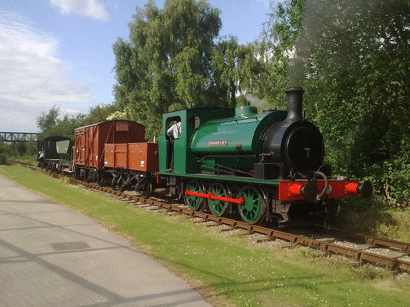
Separate pages give more details of this project. It was completed in August 2017, when the locomotive returned to service.
Conserving "Picton"
 The other main part of the work that is being financed by this grant from the heritage Lottery Fund is the conservation of "Picton". This had been brought back to the UK by David Monckton in 2002, and brought to the Middleton Railway, having previously spent all of its working life on a sugar plantation in Trnidad. If there are any pictures in existence of it working there, we do not know about them, but we do have the picture below, which shows its sister locomotive "Tarouba" at work on the same sugar plantation.
The other main part of the work that is being financed by this grant from the heritage Lottery Fund is the conservation of "Picton". This had been brought back to the UK by David Monckton in 2002, and brought to the Middleton Railway, having previously spent all of its working life on a sugar plantation in Trnidad. If there are any pictures in existence of it working there, we do not know about them, but we do have the picture below, which shows its sister locomotive "Tarouba" at work on the same sugar plantation.
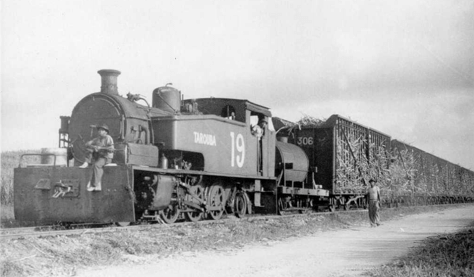
Restoring "Picton" to working order would not be a feasible proposition, and so the main part of this project is to construct a "Picton shelter" building to protect the locomotive from the elements, once it has been treated with preservative.
Separate pages give more details of this project. The part of it that was financed by the Heritage Lottery Fund was completed at the end of September 2017, although there is still some further conservation work to do on the locomotive.
Hunslet Flatbed Wagon Restoration
As part of the preparation for our special event to commemorate the 150th anniversary of the Hunslet Engine Company, we set up a project to restore this flatbed wagon which had originally belonged to Hunslet's. The restored wagon is shown below, running in the special trains for this event with the tank from "Brookes No.1" as its load.
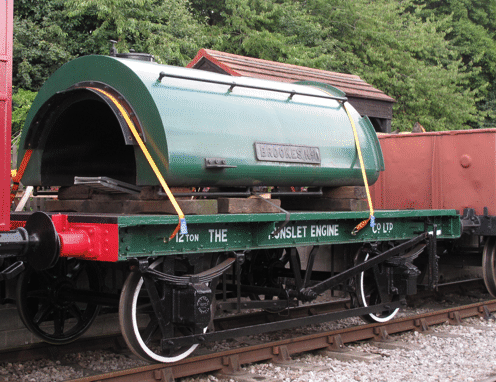
A separate page gives more details of this project.
More Information
Other pages provide more information about:

